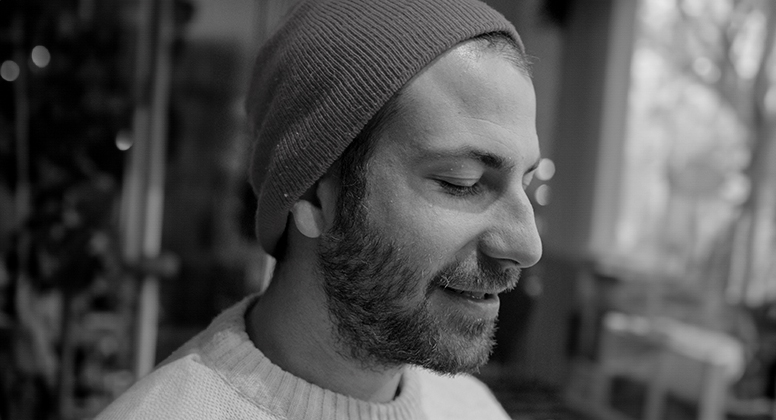The finalist artwork
And we thought (Led Zeppelin trilogy), 2022
HD Video, 20:01 min. Ed. 3 + 2 AP
By Roberto Fassone
Selected by: Domenico Quaranta
In April 2021, Sineglossa and Roberto Fassone conceived Ai Lai, an artificial intelligence trained on thousands of psychedelic trip reports written by magic mushroom consumers. Ai Lai slowly learns to write like a psychonaut and begins to compile its own psychedelic accounts. In these accounts, it narrates, in a highly imaginative style, strange events and dreamlike images, sometimes referring to unknown films, books, and albums that somehow exist in its 'imagination.'
Roberto Fassone decided to use Ai Lai's accounts as inspiration for various works, collected under the title 'And we thought.' Its words have been transformed into posters, music, films, etc.
'And we thought (Led Zeppelin trilogy)' (2022) is a fictional archaeological reconstruction of three psychedelic films by Led Zeppelin, mentioned by Ai Lai with titles (The Doors, The Road, Love is Magic), which never actually existed but emerge from the intersection of two parallel realities: the psychedelic world and the mechanical world.
Roberto Fassone
Roberto Fassone (Savigliano, 1986) è un artista estremamente poliedrico, interessato a strutture invisibili, giochi surrealisti, storie bizzarre, coincidenze fortunose, sottili trasformazioni, e incentrato sui concetti di immaginazione, tradimento, fake o errore.

The inclusion of confusion is very present in his research as a structure or creative strategy, giving rise to spaces of tension that, however, surface as places of playful enjoyment manifested in installations, videos, and performances. Initially influenced by Cesare Pietroiusti's non-functional thoughts, Fassone began developing an analytical methodology applied to elements that lack practical utility, constantly questioning what it means today to be an artist and create art.
His early research was aimed at analyzing and implementing the most common techniques in artwork construction, such as color changes, size changes, tautology, ellipsis, or equivalence. This way, the works emerged as attempts to delve into the art world, pushing the list of these creative techniques to the extreme.
This analytical mechanism was later abandoned due to saturation, but it served him in progressing in his research, especially in the performative field, where he gave more room to arbitrary freedom.
His work mirrors a reality he considers very strange, and for him, being an artist means repeating these eccentricities, adding layers of oddities. At the same time, he contemplates existential questions through a freedom rarely found in codes or rules that attempt to trap us, analyzing the flaws of systematic action.
One of the most interesting aspects is spontaneity, doing or redoing the things he did as a child, surpassing conventions and practical purposes to reach an authentic direction that transcends conventions, expectations, rules, or the need to be accepted within a system with well-defined references or parameters.
In this playful aspect, everything related to making art is oriented towards fun and lightness. However, within this conception lies darkness, errors, highlighting how the concept of death often recurs in his work, needing to find expression as a reflection on the inevitable or as an exorcism of a specific fear.
In the current context, Roberto Fassone's work fits into practices that use the fake, disguise, mannerism, fiction, or being someone else as a tool and resource. Consider the correspondences or affinities with Maurizio Cattelan, Jonathan Monk, Eva and Franco Mattes, or Chiara Fumai. Simultaneously, the playful aspect follows a well-established tradition, with traces found, for example, in Carsten Höller or Francis Alÿs.
In recent years, Fassone has exhibited and performed his work at Italian and international institutions, including: Quadriennale di Roma; Japan Media Arts Festival, Tokyo; MAMbo, Bologna; Fanta-MLN, Milan; OGR, Turin; MOCAK, Krakow; Centrale Fies, Dro; Carroll/Fletcher, London; AOYS (online), Zkm, Karlsruhe; Mart, Rovereto; Castello di Rivoli, Turin; Civitella Ranieri Foundation; Strozzina, Florence.
In 2019, he co-curated with artist and performer Kasia Fudakowski "Lo scherzo dell’arte," a performative film festival within the well-known Lo schermo dell’arte Film Festival. Also in 2019, he won the IMAGONIRMIA call, founding the 'Museo del tempo perso' (The Museum of Lost Time) in Modena Ovest. He is also a co-founder of the research space Estuario. Since 2012, he has developed an intense workshop activity dedicated to the implementation of lateral and creative thinking in collaboration with museums (Zkm, Karlsruhe; MA*GA, Gallarate), art spaces (Hangar Bicocca, Milan; OGR, Turin), and schools (MADE Program Accademia di Belle Arti Siracusa; ISD, Dusseldorf).
He recently won the Artists’ Film Italia Recovery Fund, promoted by the Schermo dell’arte Film Festival.